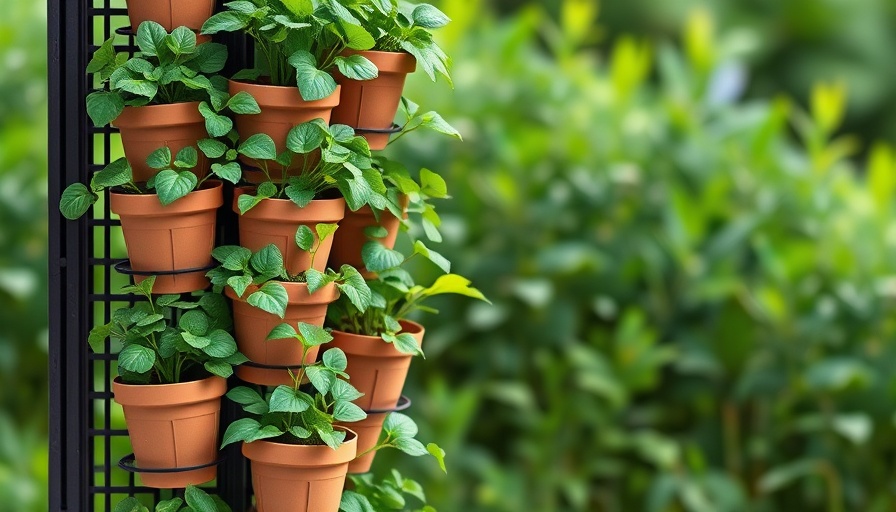
Unlocking the Potential of Vertical Gardening
Imagine being able to cultivate a lush vegetable garden or a vibrant flower bed right in your tiny patio space! Vertical gardening has become an innovative solution for those seeking to maximize their outdoor area, regardless of size. This gardening hack allows you to grow a variety of plants, from succulent displays to herb gardens, without sprawling out into the limited available space.
Why Choose Vertical Gardening?
Opting for a vertical garden not only enhances your landscaping but also provides unique aesthetic appeal. When space is at a premium, utilizing vertical wall space for growing plants can transform your small area into a rich tapestry of green, filled with flowers, herbs, and even organic vegetables. This creative approach can improve air quality, reduce household waste (by using compost), and provide fresh produce right at your doorstep.
Getting Started: Essential Gardening Tools
No gardening project is complete without the right tools! For vertical gardens, consider investing in specialized gardening supplies like wall-mounted planters, trellises, and hanging pots. A few other must-have gardening tools include high-quality gloves, a sturdy garden hose, and a dependable watering system. These make caring for your plants easier and more efficient.
Ideas for Designing Your Vertical Garden
The beauty of vertical gardening is that it can be tailored to fit your individual style. Whether you prefer a rustic look with wooden pallets or a sleek modern feel with metal frames, the design possibilities are endless. Consider incorporating versatility in your layout by combining various types of plants:
- Flowers: Brighten up your space with perennials or climbing vines.
- Herbs: Grow culinary favorites like basil and thyme for easy access when cooking.
- Vegetables: Try dwarf varieties of tomatoes or peppers that adapt well to vertical gardening.
The Benefits of Going Vertical
Beyond just saving valuable floor space, vertical gardening offers numerous benefits. The engaging design allows for easier garden care, reducing back strain from bending over. Increased sunlight exposure can result in healthier plants as sunlight can penetrate more easily through a vertical setup. Vertical spaces also tend to retain moisture longer, perfect for those who may not have the time to water daily.
Overcoming Challenges: Common Misconceptions
Some may believe that vertical gardening is complicated; however, it's quite manageable! Many beginner-friendly gardening tips exist to assist you in establishing your vertical garden smoothly. Concerns about pests or the right soil can be addressed by choosing the right garden soil and always opting for organic gardening practices.
Inspiring Success Stories
Across the country, urban dwellers are reaping the rewards of their vertical gardens. One enthusiastic gardener transformed their city balcony into a colorful retreat filled with flourishing herbs and flowers. They reported that not only did it beautify their space, but it provided a bountiful source of fresh ingredients for their meals. Such stories highlight the transformative power of vertical gardening.
Your Next Steps Towards a Vertical Garden
Considering all these benefits and the wealth of options, it’s time to take action. Start by sketching your vertical garden idea and assessing what plants you’d like to grow. Visit your local garden center for supplies and consult with specialists about the best plants suited for your conditions. Don’t be afraid to dive in and experiment!
With patience and creativity, you, too, can create a beautiful vertical garden that enhances not just your patio but your life. The growing community of gardeners is here to share advice, so remember to ask for help along the way and enjoy the process!
 Add Row
Add Row  Add
Add 




Write A Comment